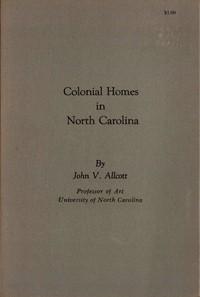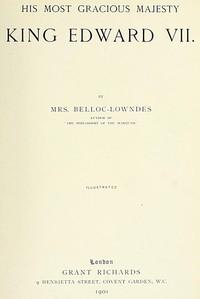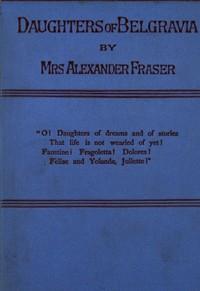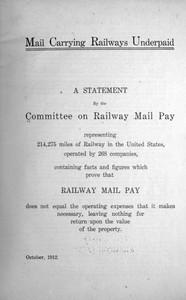Read this ebook for free! No credit card needed, absolutely nothing to pay.
Words: 22484 in 8 pages
This is an ebook sharing website. You can read the uploaded ebooks for free here. No credit cards needed, nothing to pay. If you want to own a digital copy of the ebook, or want to read offline with your favorite ebook-reader, then you can choose to buy and download the ebook.


: Colonial Homes in North Carolina by Allcott John V - Architecture Colonial; Architecture Domestic North Carolina; Historic buildings North Carolina
FOREWORD
Because of monetary limitations, it has not been possible to update this publication. Readers should be aware of the fact that a number of projects in progress at the time Dr. Allcott wrote the booklet, such as the Museum of Early Southern Decorative Arts in Winston-Salem and Tryon Palace in New Bern, have been completed.
Chairman of the Carolina Charter Tercentenary Commission was the Honorable Francis E. Winslow of Rocky Mount; executive secretary was Brig. Gen. John D. F. Phillips, U.S. Army .
July 1, 1975
INTRODUCTION
This booklet, planned for young student readers, discusses a group of colonial homes scattered over North Carolina, which remain and can be seen today. They begin in the early 18th century, for earlier homes have long since disappeared. The fate of these first buildings is likewise the fate of most of the churches, courthouses, and other non-domestic structures built during colonial times. Homes, therefore, chiefly constitute the first group or body of architecture remaining from the early and mid-18th century.
Architecture of the final years of the colonial period will be mentioned only lightly. During this later time new ideas of elegance came into North Carolina architecture, as in the well known Tryon Palace, to which we will refer later. For many people who have not thought very much about colonial architecture, these elegant later buildings, and also those of the early Republic, stand somehow for all or the best of "colonial" architecture, and the exciting architecture of an earlier, bustling, genuinely colonial period is not recognized. It will be useful in this booklet, therefore, to focus on the architecture of the earlier 18th century and see the simple, vigorous ideas of this period.
These buildings are of surprising variety--they are made of brick, stone, or wood; they are large and small, plain or fancy in one way or another. A reason for such diversity is that the colonists, coming from different foreign countries and settlements in America, brought with them differing ideas about what a building should look like and how it should be constructed. These early buildings, however, do hold together as a group. More important, they show the rise of architectural ideas especially suited to the hot Carolina summers. Thus, we view our material both as expressive of a genuine "colonial" period, and as establishing ideas which reflect Southern life.
Besides talking about colonial architecture as an important aspect of colonial history, this booklet has two special purposes. One is to interest the student in architecture itself. Some people go through their whole lives without ever being conscious about buildings they like or dislike; they do not wonder why one building looks gay, another sober, and others pompous or unpretentious. This study will provide a number of approaches to architecture. Using everyday vision, so to speak, we will see photographs of buildings from outside and inside, in long-shot and close-up. We will see buildings in plan views and diagrams which show in a few lines what a photograph cannot. We will look down on buildings and cities from high in the air . And we will look with X-ray eyes into the construction of buildings. In these and other ways a person begins to experience the manifold realities of architecture and to understand how architecture ranks with painting and sculpture as a great, compelling art. Buildings and cities are the material frame created by man, in which he can breathe and live life as he desires it.
The other special purpose of this booklet is to induce the student to investigate old buildings in his or her area--to find them, prowl through their basements and attics to see how they were made, make sketches and take photos of them, look up records, and talk to old citizens about them. People who do this are detectives in a sense; it may take months before the mysteries of a particular building are solved. This is very important work. Each day old buildings are destroyed without any record for architectural history. Such a record can be made only by someone on the spot over an extended period of time--someone like the reader of this study.
ACKNOWLEDGMENTS
In this booklet we enter the world of two dedicated students of North Carolina architecture, Professor Louise Hall of Duke University, and Mr. W. S. Tarlton, Superintendent of the Historic Sites Division of the State Department of Archives and History. The manuscript was read by Professor Hall and Mr. Tarlton, and also by Professor Joseph C. Sloane and Miss Priscilla Roetzel, two of the author's colleagues at the University of North Carolina, and by General John D. F. Phillips, Executive Secretary of the Carolina Charter Tercentenary Commission. These people, warmly interested in our project, made numerous important suggestions which are reflected in the present booklet. Other North Carolinians have aided our study of individual buildings:--Mr. Donald Carrow and Don Carrow Jr., of Bath; Mrs. Guy Springle, Miss Annie L. Morton, Mr. and Mrs. Henry Hatsell, and Mr. and Mrs. Marlin Reed of Beaufort; Dr. and Mrs. William Wassink of Camden; Dr. William Jacocks, Mrs. Jane Bahnsen, and Mr. William Powell of Chapel Hill; Miss Mary Louise Phillips of Charlotte; Miss Elizabeth Vann Moore and Mr. David Warren of Edenton; Mr. and Mrs. John M. Stuart of Elizabeth City; Mr. and Mrs. L. A. Chenoweth, near Hertford; Mr. and Mrs. Chester Haworth of High Point; Dr. Mary Claire Engstrom and Mrs. Edward Lloyd of Hillsboro; Miss Gertrude S. Carraway, Mr. and Mrs. Tull Richardson, and Mr. William F. Ward of New Bern; Mr. George W. Alexander of Nixonton; Mrs. Sprague Silver and Miss Sue Todd of Raleigh; Mr. Frank L. Horton of Salem; Mrs. Henry Fairley, Sr., and Mr. William D. Kizziah of Salisbury; Mrs. Katherine N. McCall of Southern Pines; Mr. Edmund H. Harding of Washington; the Misses Eleanora and Joanna MacMillan, near Wilmington; Mrs. Peter Rascoe of Windsor; and Mr. Henry Jay MacMillan of Wilmington.
Free books android app tbrJar TBR JAR Read Free books online gutenberg
More posts by @FreeBooks


: His Most Gracious Majesty King Edward VII by Lowndes Marie Belloc - Edward VII King of Great Britain 1841-1910







